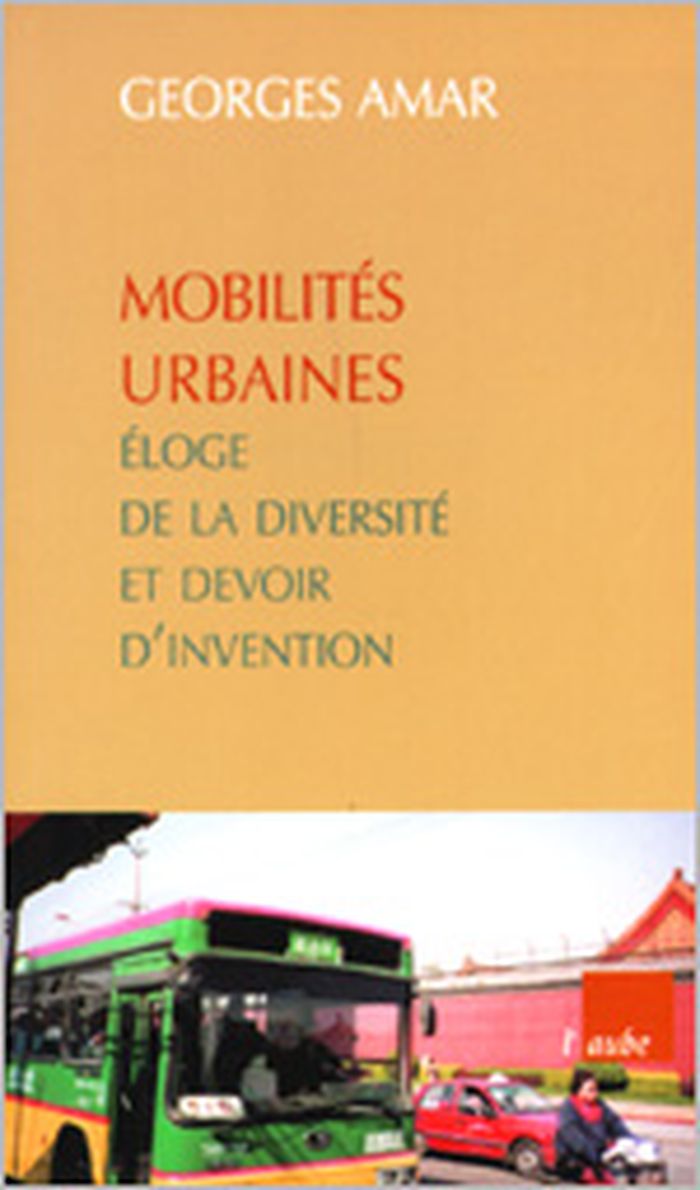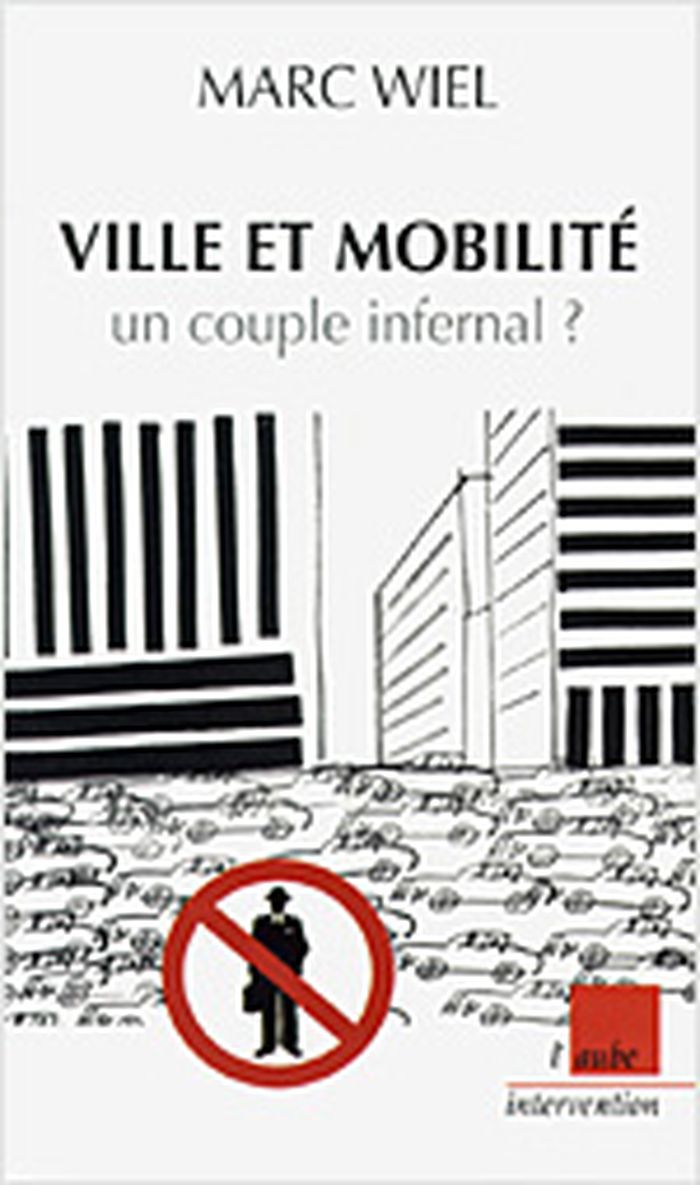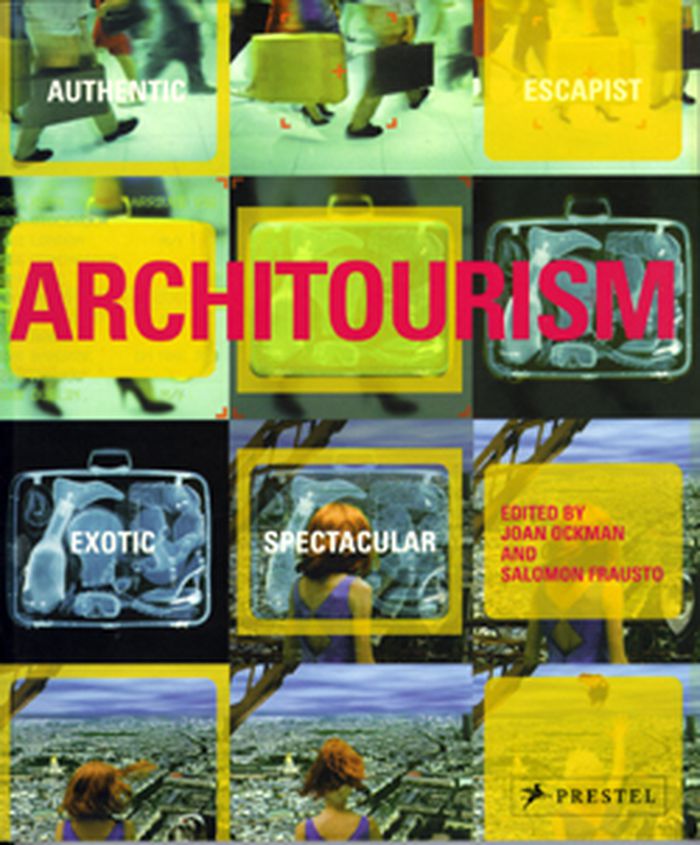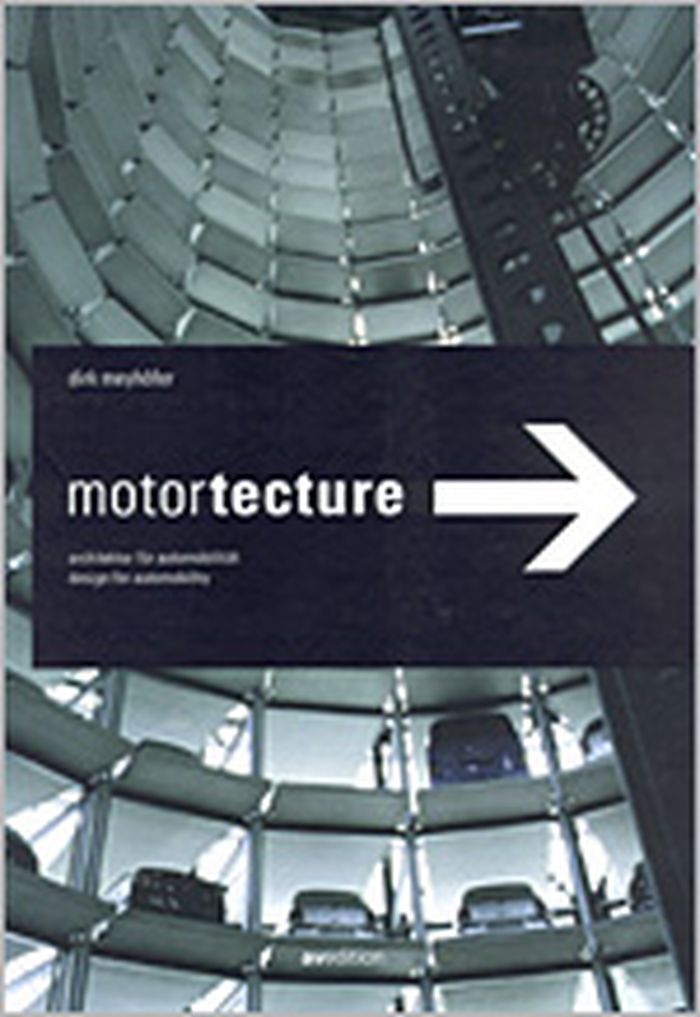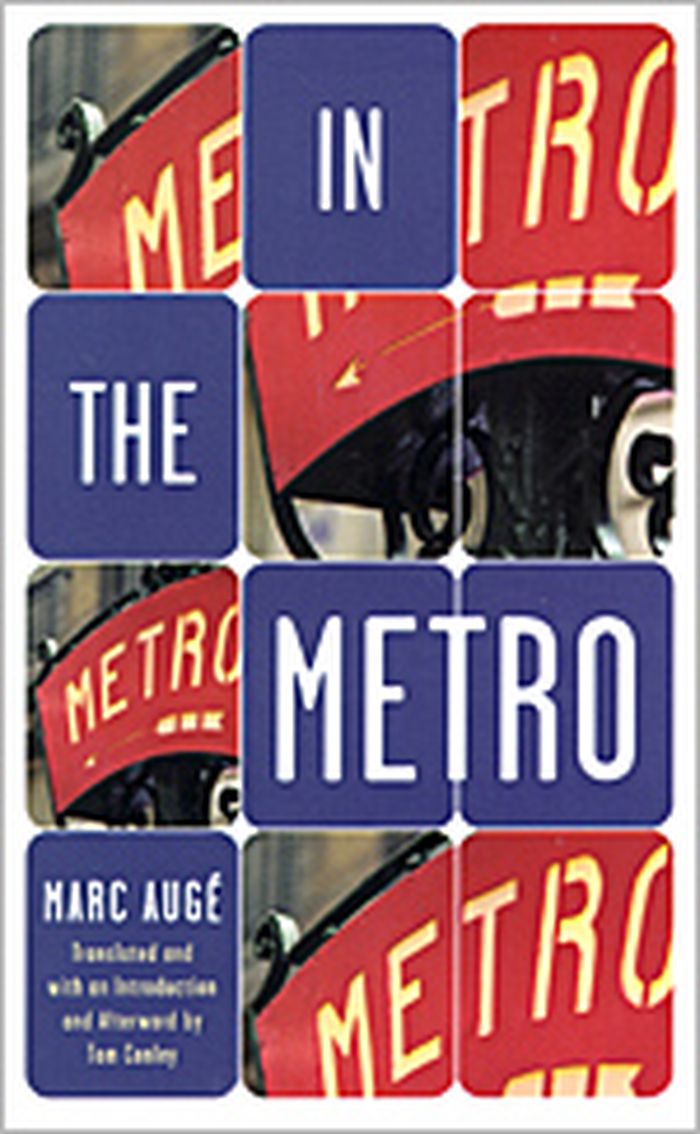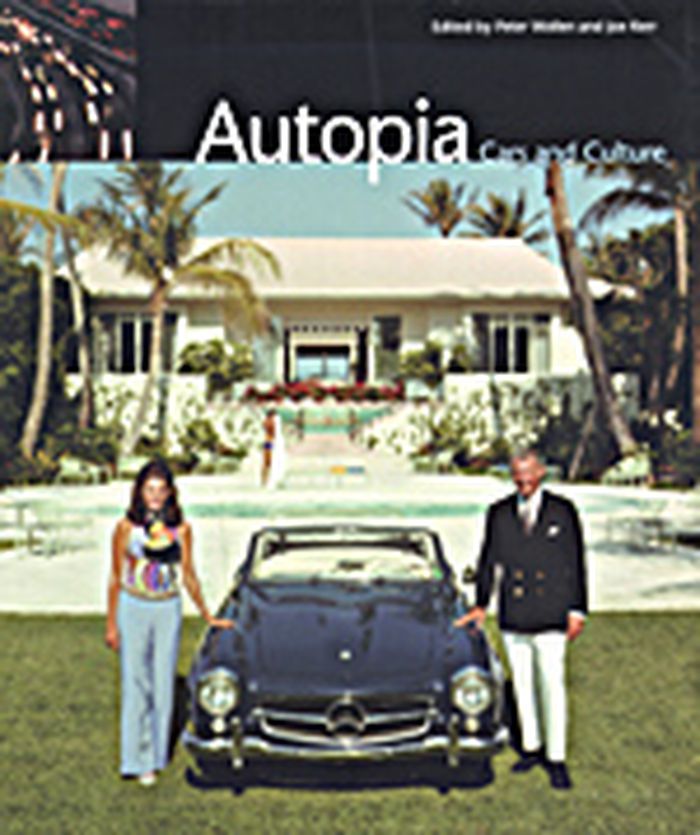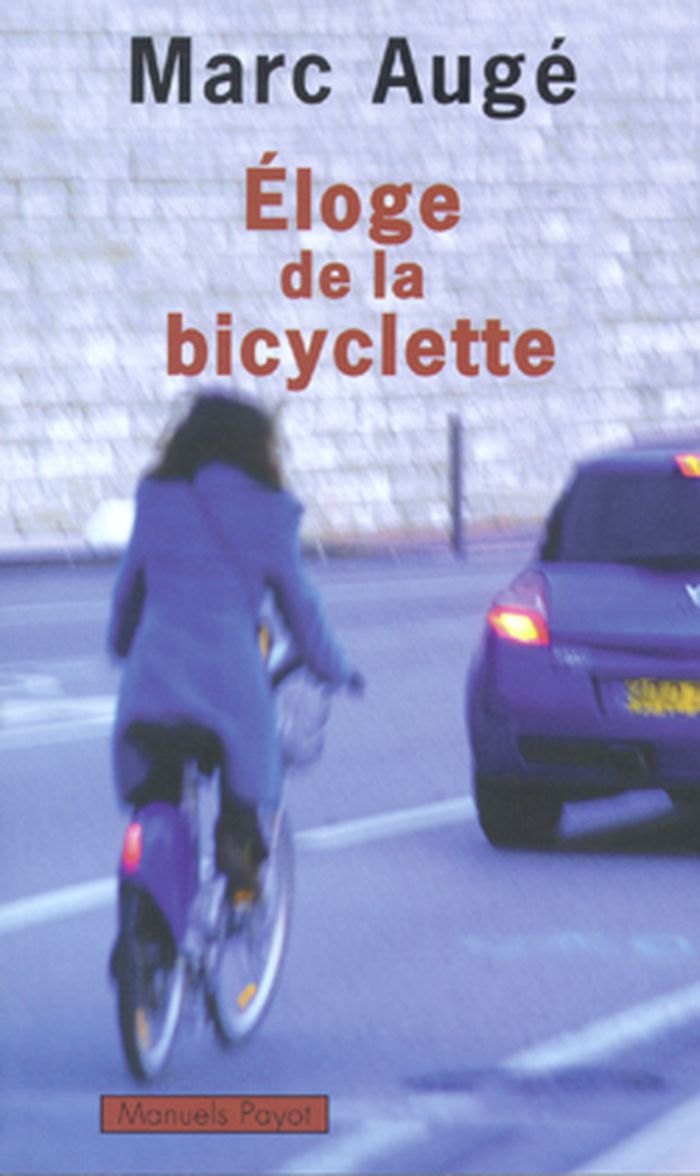$34.95
(available to order)
Summary:
Comment penser et organiser les transports dans des villes où les gens bougent de plus en plus ? Georges Amar est allé voir comment, ailleurs, on pensait les mobilités urbaines et comment on explorait de nouvelles démarches. Les analyses qu’il tire de ses voyages nous montrent que l’innovation tient largement à la capacité non pas de transposer de “bonnes pratiques” mais(...)
Mobilités urbaines : éloge de la diversité et devoir d'invention
Actions:
Price:
$34.95
(available to order)
Summary:
Comment penser et organiser les transports dans des villes où les gens bougent de plus en plus ? Georges Amar est allé voir comment, ailleurs, on pensait les mobilités urbaines et comment on explorait de nouvelles démarches. Les analyses qu’il tire de ses voyages nous montrent que l’innovation tient largement à la capacité non pas de transposer de “bonnes pratiques” mais de s’en inspirer dans des démarches créatrices qui s’appuient sur les spécificités de chaque contexte urbain et de chaque culture technique. Les manières de circuler en Chine, en Californie ou au Chili nous aident à jeter un autre regard sur nos propres façons de nous déplacer ou de penser les questions de la mobilité urbaine.
Transportation, Tourism, Migration
books
$67.00
(available to order)
Summary:
La croissance exponentielle de la mobilité, mais aussi les transformations qualitatives des pratiques dans ce domaine, constituent de nouveaux défis tant pour les scientifiques que pour les praticiens. Or qu'il s'agisse de personnes, de biens, de services, de capitaux ou encore d'informations, des corrélations complexes lient l'évolution des mobilités aux dynamiques(...)
Transportation, Tourism, Migration
May 2004, Lausanne
Les territoires de la mobilité : l'aire du temps
Actions:
Price:
$67.00
(available to order)
Summary:
La croissance exponentielle de la mobilité, mais aussi les transformations qualitatives des pratiques dans ce domaine, constituent de nouveaux défis tant pour les scientifiques que pour les praticiens. Or qu'il s'agisse de personnes, de biens, de services, de capitaux ou encore d'informations, des corrélations complexes lient l'évolution des mobilités aux dynamiques territoriales. Les spécialistes des transports, certes, mais aussi les acteurs de l'aménagement du territoire et de l'urbanisme sont donc de plus en plus confrontés aux enjeux spatiotemporels que recèlent les (nouvelles) pratiques de mobilité. Pour y faire face, quelles approches et quelles stratégies collectives envisager? En fonction de quels savoirs, de quels objectifs et de quelles valeurs? Combinant des approches théoriques et des savoirs empiriques tout en privilégiant des perspectives transdisciplinaires, cet ouvrage offre un état des connaissances actuelles en la matière, présente quelques expériences emblématiques (en Suisse et dans les pays voisins), et esquisse des pistes de réflexion et d'action en matière de mobilité et de politique territoriales. Il jette en outre un éclairage particulier sur les enjeux territoriaux de la mobilité, en conjuguant des approches spatiales avec des approches temporelles: là où l'aire du temps féconde les térritoires de la mobilité.
books
May 2004, Lausanne
Transportation, Tourism, Migration
books
Future transport in cities
$62.50
(available to order)
Summary:
Richards shows that attractive and practical alternatives to a car dependent society are possible. With the growth of car ownership and use reaching crisis proportions in our cities it is imperative to find and implement alternatives if cities are to survive and prosper. He reveals how transport technology is developing, in particular, showing how it can be integrated(...)
Transportation, Tourism, Migration
October 2001, London
Future transport in cities
Actions:
Price:
$62.50
(available to order)
Summary:
Richards shows that attractive and practical alternatives to a car dependent society are possible. With the growth of car ownership and use reaching crisis proportions in our cities it is imperative to find and implement alternatives if cities are to survive and prosper. He reveals how transport technology is developing, in particular, showing how it can be integrated into the urban environment. The book opens with a look at the "best" of current transportation systems and goes on to explore such advanced technologies as automated highways, covered cities, monorails, new elevated systems, smart cars, guided buses, as well as intelligent highways, and car-free housing. The importance, too, of simple measures such as walking and cycling are covered as being an essential part of any future city as well as that of an "integrated transport" if people are to be encouraged to get out of their cars.
books
October 2001, London
Transportation, Tourism, Migration
$19.95
(available to order)
Summary:
On a souvent comparé les villes à d’immenses cerveaux collectifs en perpétuel mouvement. Seulement, pour que ce cerveau soit irrigué, vitalisé sans cesse, il faut que l’on puisse s’y mouvoir, que l’on sache faciliter les échanges en nombre et qualité. Aussi la mobilité, l’accessibilité sont essentielles à la qualité de la vie urbaine. Mais la facilité de se mouvoir induit(...)
Transportation, Tourism, Migration
November 2005, La Tour d'Aigues
Ville et mobilité : un couple infernal?
Actions:
Price:
$19.95
(available to order)
Summary:
On a souvent comparé les villes à d’immenses cerveaux collectifs en perpétuel mouvement. Seulement, pour que ce cerveau soit irrigué, vitalisé sans cesse, il faut que l’on puisse s’y mouvoir, que l’on sache faciliter les échanges en nombre et qualité. Aussi la mobilité, l’accessibilité sont essentielles à la qualité de la vie urbaine. Mais la facilité de se mouvoir induit des congestions, des nuisances et des mutations urbaines incontrôlées. Alors, à partir de quand peut-on dire que ville et mobilité rentrent en opposition ? Pour Marc Wiel, il faut penser et organiser, en même temps, la mobilité et la ville car elles ne peuvent être dissociées ; interagissantes, à la fois complémentaires et concurrentes, elles font système. La ville conditionne les formes de la mobilité, comme les conditions de la mobilité influent sur la ville. Pour l’auteur, la ville équilibrée et équilibrante, la ville durable, est celle de la vitesse maîtrisée, de la vitesse accordée aux densités de l’occupation du sol mais aussi à la fréquence des échanges. L’équilibre entre transports individuels et collectifs, politiques d’urbanisme, pourra alors être trouvé, mais dans l’unicité de chaque réalité urbaine. Un court essai qui pose des questions essentielles sur l’avenir de notre qualité de vivre ensemble.
Transportation, Tourism, Migration
$47.00
(available to order)
Summary:
This illustrated book looks at why the world's most interesting buildings are becoming the hottest destinations for today's travelers. In the last few decades architecture has become a major focus for travelers, rather than merely a part of a larger itinerary. Illustrated with nearly one hundred color photographs, this series of essays and contributions by scholars,(...)
Transportation, Tourism, Migration
October 2005, München, Berlin, London, New York
Architourism : authentic, escapist, exotic, spectacular
Actions:
Price:
$47.00
(available to order)
Summary:
This illustrated book looks at why the world's most interesting buildings are becoming the hottest destinations for today's travelers. In the last few decades architecture has become a major focus for travelers, rather than merely a part of a larger itinerary. Illustrated with nearly one hundred color photographs, this series of essays and contributions by scholars, critics, architects, and artists explores the role of architecture in the contemporary tourist imagination. From Mont Saint Michel and the Taj Mahal to Bilbao's Guggenheim museum and the Blur building in Switzerland's lake Neuchâtel, the authors focus on how certain iconic buildings have found their way into the cultural consciousness. At the same time they offer insights as to why other buildings, such as Minnesota's Mall of America and the faux architecture of Las Vegas, have become integral to their regions' tourist economy-and postulate how this success will influence architecture of the future.
Transportation, Tourism, Migration
The emigrants
$18.95
(available to order)
Summary:
In this poignant and acclaimed novel about the beauty of lost things, the protagonist traces the lives of four elderly German/Jewish exiles. The Emigrants is composed of four long narratives which at first appear to be the straightforward accounts of the lives of several Jewish exiles in England, Austria, and America. The narrator literally follows their footsteps,(...)
The emigrants
Actions:
Price:
$18.95
(available to order)
Summary:
In this poignant and acclaimed novel about the beauty of lost things, the protagonist traces the lives of four elderly German/Jewish exiles. The Emigrants is composed of four long narratives which at first appear to be the straightforward accounts of the lives of several Jewish exiles in England, Austria, and America. The narrator literally follows their footsteps, studding each story with photographs and creating the impression that the reader is poring over a family album. But gradually, Sebald's prose, which combines documentary description with almost hallucinatory fiction, exerts a new magic, and the four stories merge into one. Illustrated throughout with enigmatic photographs.
Transportation, Tourism, Migration
$108.00
(available to order)
Summary:
This book focuses on the conflict between the two heroes of the 20th century; the myth of cars lending mortals almost infinite mobility, and modern architecture and building art without which the automobile would not have been able to develop the way it has today. This will be the first publication of its kind: containing the very best architectural examples(...)
Transportation, Tourism, Migration
January 1900, Ludwigsburg
Motortecture : design for automobility
Actions:
Price:
$108.00
(available to order)
Summary:
This book focuses on the conflict between the two heroes of the 20th century; the myth of cars lending mortals almost infinite mobility, and modern architecture and building art without which the automobile would not have been able to develop the way it has today. This will be the first publication of its kind: containing the very best architectural examples illustrated in a highly informative and fascinating way – with work from Audi, BMW, Mercedes-Benz, SAAB, Smart, Volkswagen, to name but a few.
Transportation, Tourism, Migration
In the metro
$30.95
(available to order)
Summary:
Marc Augé takes readers below Paris in a work that is both an ethnography of the city and a personal narrative. He juxtaposes the romance of the metro with the reality of multi-ethnic urban France in his reflections on anthropology in an era of globalization and urban development.
Transportation, Tourism, Migration
October 2002, Minneapolis
In the metro
Actions:
Price:
$30.95
(available to order)
Summary:
Marc Augé takes readers below Paris in a work that is both an ethnography of the city and a personal narrative. He juxtaposes the romance of the metro with the reality of multi-ethnic urban France in his reflections on anthropology in an era of globalization and urban development.
Transportation, Tourism, Migration
Autopia : cars and culture
$59.95
(available to order)
Summary:
Autopia is the first book to explore the culture of the motor car in the widest sense. Featuring newly commissioned essays by writers, critics, historians, artists and film-makers, as well as reprinting key texts, it examines the effect of the car throughout the world, including the USA, Western and Eastern Europe, Japan, China, Cuba, India and South Africa. In this book(...)
Transportation, Tourism, Migration
November 2002, London
Autopia : cars and culture
Actions:
Price:
$59.95
(available to order)
Summary:
Autopia is the first book to explore the culture of the motor car in the widest sense. Featuring newly commissioned essays by writers, critics, historians, artists and film-makers, as well as reprinting key texts, it examines the effect of the car throughout the world, including the USA, Western and Eastern Europe, Japan, China, Cuba, India and South Africa. In this book the car is treated neither as a technological fetish object nor as an instrument of danger. Instead, it is examined as an important determinant of 20th-century culture.
Transportation, Tourism, Migration
Éloge de la bicyclette
$19.95
(available to order)
Summary:
Cet éloge de la bicyclette passe par trois moments : le mythe, l'épopée et l'utopie. La bicyclette a une dimension mythique qui est à la fois individuelle et collective. Aujourd'hui le mythe a pris un coup. Mais la bicyclette revient par la politique de la ville et son image est l'objet d'un regain d'enthousiasme. L'opération Vélib' est très insuffisante, mais elle ouvre(...)
Éloge de la bicyclette
Actions:
Price:
$19.95
(available to order)
Summary:
Cet éloge de la bicyclette passe par trois moments : le mythe, l'épopée et l'utopie. La bicyclette a une dimension mythique qui est à la fois individuelle et collective. Aujourd'hui le mythe a pris un coup. Mais la bicyclette revient par la politique de la ville et son image est l'objet d'un regain d'enthousiasme. L'opération Vélib' est très insuffisante, mais elle ouvre une espérance. On peut se prendre à rêver et tracer les grands traits de la ville utopique de demain où les transports en commun et la bicyclette seraient les seuls moyens de déplacement en ville et où la paix, l'égalité et le bon air règneraient dans le monde après l'effondrement des magnats du pétrole.
Transportation, Tourism, Migration
